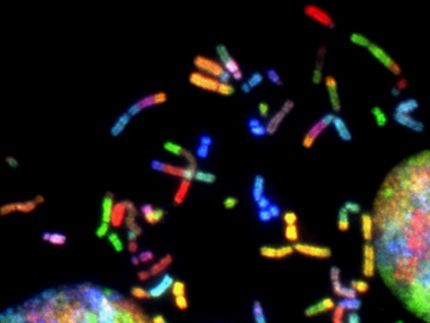The role of bitter receptors in cancer
Bitter receptors are also found on cancer cells
Bitter taste receptors do not only support humans in tasting. They are also found on cancer cells. A team led by Veronika Somoza from the Faculty of Chemistry at the University of Vienna and the German Leibniz Institute for Food Systems Biology at the Technical University of Munich has investigated the role they play there. For this purpose, the scientists compiled and evaluated extensive scientific data. Their results suggest that bitter taste receptors should also be considered as additional targets for chemotherapeutic agents in the future and should be investigated in this regard. The systematic review recently appeared in the journal Cancers.

Depiction of the model of the bitter taste receptor TAS2R10.
© Jürgen Behr / Leibniz-LSB@TUM
Humans have 25 different types of functional bitter taste receptors. These are found on our tongue, where they facilitate the taste perception of bitter tasting compounds. In addition, there are increasing findings that cells of extra-oral organs also have such receptors. Since we do not "taste" with these receptors expressed in non-gustatory tissues, the question arises as to what functions they fulfill there. Some of this is already known. For example, certain bitter taste receptors in gastric cells are involved in the regulation of gastric acid secretion or play a role in the release of antimicrobial substances in cells of the intestinal and the respiratory tract.
Bitter receptors are also found on cancer cells
"The new findings suggest that bitter taste receptors have physiological functions that could be used to prevent or treat diseases", reports study author Agnes Mistlberger-Reiner, a postdoctoral researcher at the Department of Physiological Chemistry at the University of Vienna. This also applies to cancer, she said, since bitter taste receptors are also present and functionally active in cancer cells.
To obtain an overview of the current state of knowledge on the topic of "bitter taste receptors and cancer", the team from the University of Vienna, the Leibniz Institute for Food Systems Biology at the Technical University of Munich and the Medical University of Vienna conducted a systematic search in PubMed and GoogleScholar. The resulting systematic review considers both studies that investigated the relationships between taste perception of bitter compounds, diet, and the incidence of certain cancers, and those that explored the role of bitter receptors in carcinogenesis at the molecular level.
Individual taste perception, diet and cancer
"As our data analysis shows, no connection has been proven so far between genetically determined differences in the perception of bitter compounds, the diet and the development of cancer", says Veronika Somoza, who is deputy director of the Department of Physiological Chemistry as well as director of the Leibniz Institute in Freising. Furthermore, the study found that in many cases, bitter taste receptor gene expression is downregulated in cancer cells and tissues, meaning fewer gene products were detectable.
"Conversely, there is evidence that overexpression of these receptor genes and targeted activation of bitter taste receptors stimulate cellular anti-cancer mechanisms", added first author and PhD student Sofie Zehentner. These include effects such as reduced cell division and migration as well as an increased apoptosis rate, i.e. an increase in programmed cell death of cancer cells.
"There is much to suggest that bitter taste receptors are involved in cellular mechanisms of cancer, making them interesting targets for the development of new therapeutics. Therefore, we intend to further explore the functions of bitter taste receptors in the future", said Veronika Somoza.
The review article is the result of a project funded by the Vienna Science and Technology Fund (WWTF), in which the scientists around Veronika Somoza are investigating the extent to which the aroma compound homoeriodicytol is effective against taste disorders in cancer patients.
























































